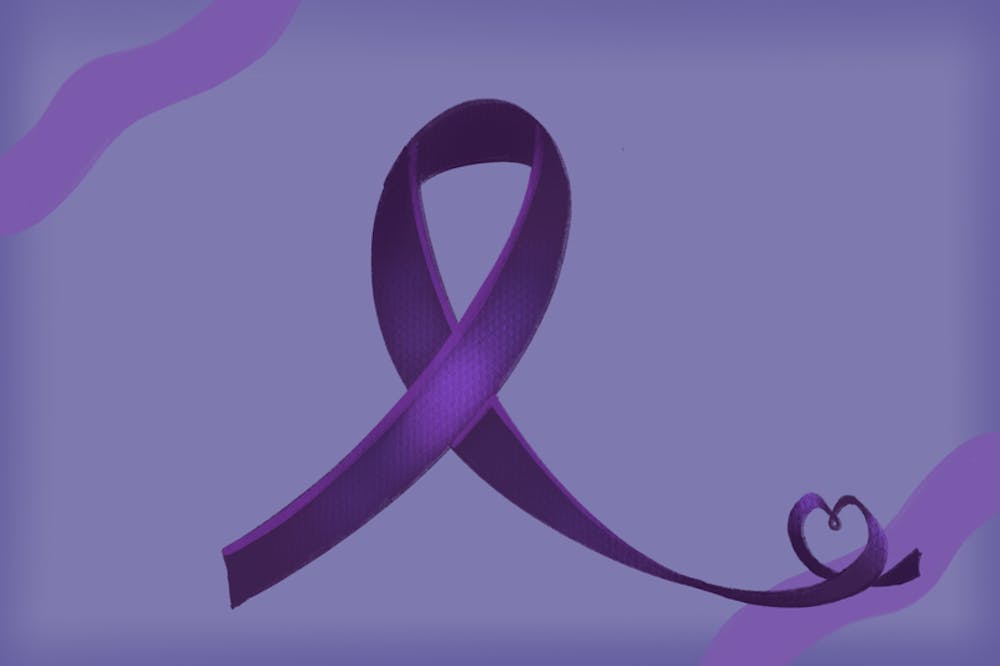November is Epilepsy Awareness Month. Many people may already be aware of the condition from its prevalence in medical dramas, but that portrayal is often exaggerated and does not fully encapsulate what epilepsy entails.
Epilepsy is a complex and nuanced neurological disorder that impacts a large part of the world population. To understand epilepsy and its impact on daily life, it's important to review the facts, recognize its effects and know the basics of seizure first aid.
Understanding epilepsy
It is a common condition: Approximately one in 26 people will develop epilepsy, according to Epilepsy Foundation.
The presentation of symptoms varies from person to person. Some may have tonic-clonic seizures that entail big movements while others experience less obvious seizures in which their speech and consciousness are inhibited.
Hazel Cates, a junior studying business law, was first diagnosed with epilepsy in third grade. Her seizures often looked like "zoning out" with episodes in which she was still walking around and interacting with her environment but could not recall what she did and was unable to respond to others, Cates said.
This manifestation of symptoms initially led to a misdiagnosis of anxiety and panic attacks from her pediatrician, she said. Other adults in her life did not recognize that she was having seizures.
"(A) teacher had talked to my mom, and she said that I was doing it to get attention," Cates said.
A misconception held by many people is that the only way a seizure presents itself is in the tonic-clonic form with convulsions and loss of motor function. However, the general definition of a seizure is much more broad.
"A seizure is a symptom which represents an abnormal electrical discharge of the brain, and wherever part of the brain that discharge occurs is the behavior that manifests," said Joseph Sirven, a professor of neurology and chair emeritus of the Mayo Clinic in Arizona.
For example, abnormal currents impacting the temporal lobe can cause strange feelings or sensations and a lack of awareness.
Oftentimes, the presentation of epilepsy may look different for different age groups.
In younger kids, presenting symptoms may be staring or blinking, but in older adults, it may look like confusion, Sirven said.
Knowing first aid
Seizures can be a frightening experience for both those experiencing them and those who witness them. It may feel as though the seizure lasts forever, but the average seizure lasts less than two minutes, according to the Mayo Clinic website. To help the situation, witnesses can perform seizure first aid to ensure the safety and comfort of the person having the seizure.
A step of first aid is to clear the area surrounding the person having the seizure of dangerous items like sharp objects or hot stoves. This will mitigate risks of harm for the person while they are not fully conscious.
"It's really the injuries that happen secondary to the seizure that really can hurt people," said Bradley Greger, associate professor of Bioengineering in the School of Biological and Health Systems Engineering.
Sirven said an important step to take if someone is having a clonic-tonic seizure is to roll them onto their side. This will ensure that their airway will stay open and they will not have an issue breathing.
There are nuanced layers to the discussion of whether or not to call 911 if someone is having a seizure. On one hand, if the person having the seizure is someone who is known to have epilepsy, they may not want to incur steep medical bills for something they are aware of, Sirven said.
"If you really think it's necessary, call 911," Greger said. "That's probably your first bet."
On the other hand, if the person or friend is not known to have epilepsy, getting trained first responders on the scene could be vitally important.
When dealing with a seizure, first aid being there for the person after it takes place is essential. Seizures can be incredibly disorienting and often people have no memory of what happened while they were unconscious, according to Sirven.
To help them reorient to their surroundings, explain what happened and offer to call someone for them. A calm and gentle presence is key to assisting after a traumatic event.
A final step in knowing how to address a seizure is knowing what not to do. There is a perpetuating myth that people should put something in the person's mouth, which is antithetical to seizure first aid, Greger said.
Other "don'ts" when administering seizure first aid include: don't hold the person down, don't give mouth-to-mouth resuscitation and don't try to give them food or drinks immediately after, according to the CDC.
Being supportive
A final piece to epilepsy awareness is supporting those with epilepsy. There tends to be a stigma that comes along with the disorder that is founded on a lack of understanding. This issue can be combatted by education and empathy.
"This is a common condition that can occur in any circumstance," Sirven said. "It is something that can be managed with tons of treatments that are available."
Having a strong support system is key to those with epilepsy, and that support system stretches beyond just parents and caregivers, Cates said.
Teachers, coaches and healthcare professionals can also be important advocates for those with epilepsy.
There are also many medically accredited resources available to learn more about epilepsy: The Epilepsy Foundation, the National Institute of Health, the Mayo Clinic and the Cleveland Clinic are among them.
Finally, for those diagnosed with epilepsy and seeking support, there are many resources, including the Arizona chapter of the Epilepsy Foundation, that exist to branch fields to connect people with resources to improve the lives of people with epilepsy.
"Don't be embarrassed about it because it's okay and you can't control it," Cates said. "It's just happening to you."
Edited by Senna James, Sophia Braccio, Tiya Talwar, Alysa Horton and Natalia Jarrett.
Reach the reporter at kagore1@asu.edu and follow @kategore_17 on X.
Like The State Press on Facebook and follow @statepress on X.
Kate is a freshman studying journalism and mass communication. This is her second semester with The State Press.




